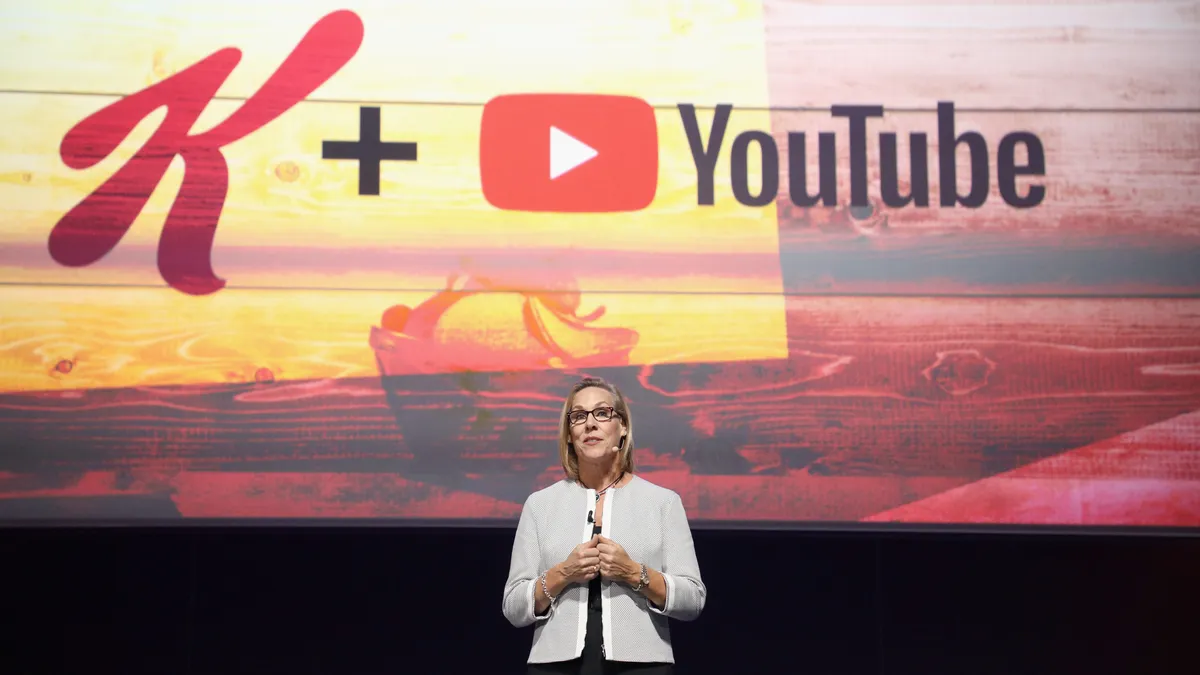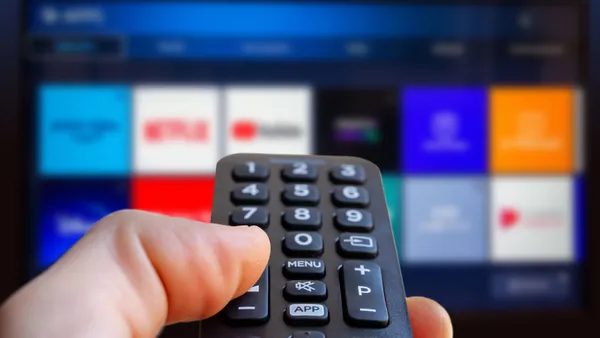Dive Brief:
-
Speaking at YouTube's 2018 Brandcast presentation in New York City on Thursday, Kellogg's President of U.S. Snacks Deanie Elsner detailed how the company's digital marketing strategy experienced what she described as a paradigm shift due, in part, to two campaigns on YouTube — a platform Kellogg's spent essentially nothing on just three years ago.
-
The first was for Rice Krispies Treats and leveraged YouTube Director Mix. Kellogg's, one of the first brands to pilot the tool for customizing and sequencing video campaigns at scale, created 250 personalized assets delivered to different channels, which outperformed generic banner ads by 2x. Overall the campaign generated a 29% lift in ad recall, a 15% lift in purchase consideration and a 4% lift in sales and market share growth despite the brand running 20% fewer retail displays, per Google Brandlift data shared by Elsner.
- A more recent example was a digital push around Pringles' first-ever Super Bowl TV spot, starring the actor Bill Hader, from earlier this year. Tapping into the humor of the "Saturday Night Live" alum, Kellogg's deployed six-second bumpers tied to campaign creative and delivered 60 million impressions total. Internal research also found that one in five consumers aware of the campaign actually tried out its central conceit of "flavor stacking," or combining different variants of Pringles together to create new flavors
Dive Insight:
At a moment when some marketers are eyeing digital marketing with a greater degree of skepticism, Kellogg's success stories shed light on some of the distinct ways the channel can still benefit brands. The theme running through both YouTube campaigns cited during Elsner's portion of the Brandcast upfront was a mix of personalization but also scalability to reach a broader audience online.
For legacy marketers working in segments like packaged foods that are struggling with digital disruption, the fact that digital video can be personalized and is scalable — and includes newer formats like six-second bumper ads — can help brands command attention and preserve relevance with easily-distracted consumers.
"Kellogg's snacks brands were not keeping pace [...] we were losing touch with our consumers," Elsner told a packed house at Radio City Music Hall.
"We went from spending very little on digital platforms to now spending 60% to 70% of our overall marketing budget," she added later. "In fact, since 2015 we've increased our spend on YouTube each year, including a 300% increase last year alone."
While Kellogg's appears particularly bullish on digital, other marketers are starting to demand more transparency from the channel following a slew of controversies over the past several years. Inaccurate, questionable or false digital campaign measurement and reporting have led 21% of surveyed marketers to cut back on their advertising spend, according to recent findings from the CMO Council. Ninety-five percent of respondents believed digital media must become more reliable.
Kellogg's beat Wall Street's estimates during its Q1 earnings reported earlier this week, per Food Dive, with $3.4 billion in revenue for the quarter. In a statement, CEO Steve Cahillane noted the marketer achieved "accelerated growth" in frozen foods and for Pringles, though cereals showed softer performance.















